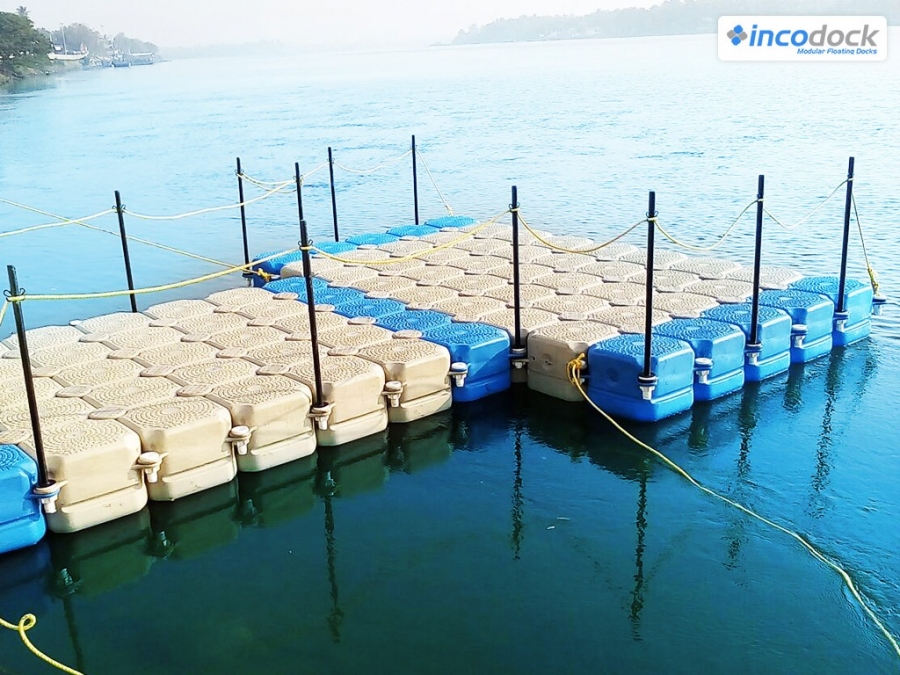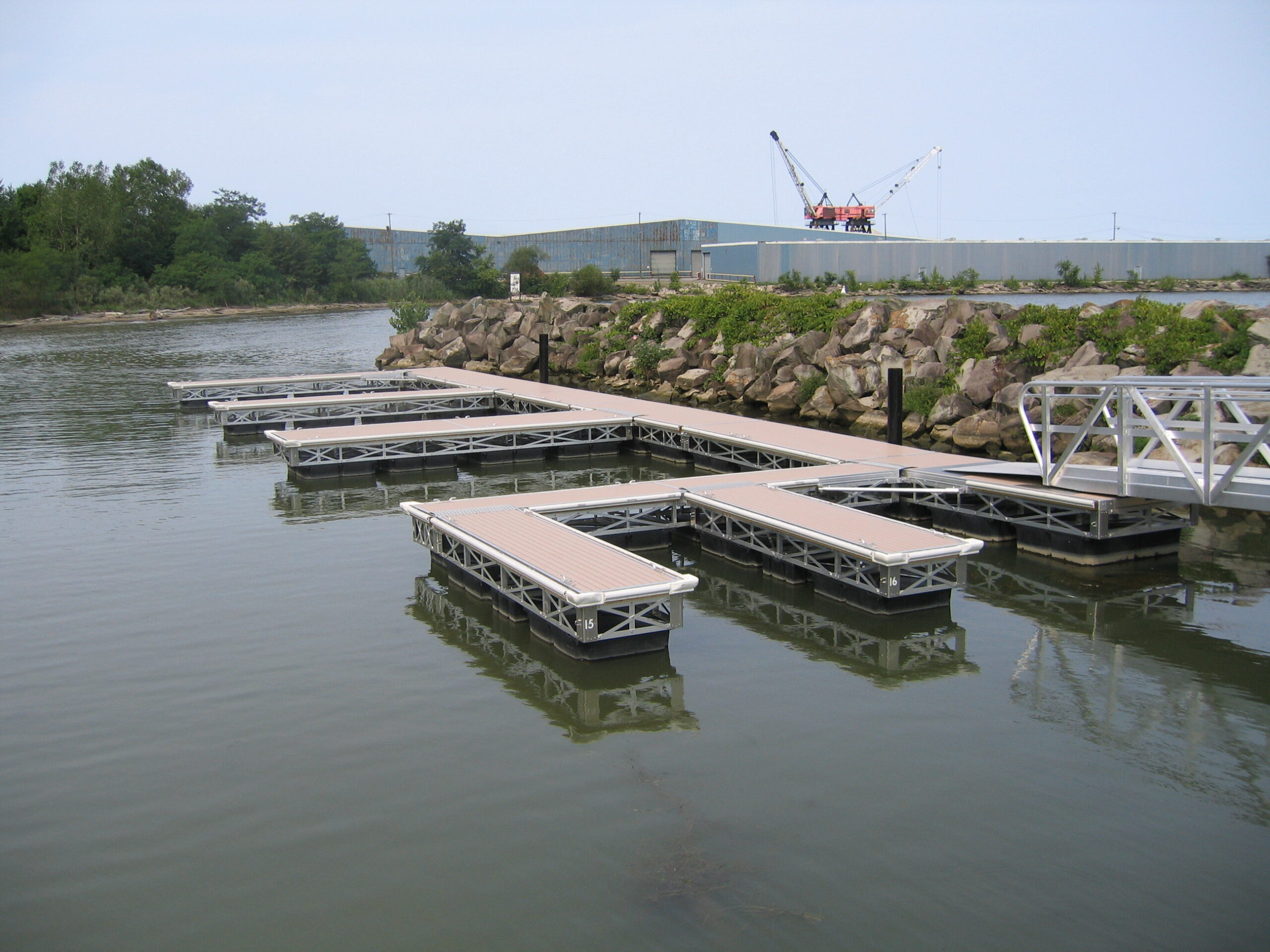Floating Docks: The Smart Choice for Modern Beachfront Living and Recreation
Floating Docks: The Smart Choice for Modern Beachfront Living and Recreation
Blog Article
Develop the Perfect Docking Option With Floating Docks
Floating docks existing a functional service for a range of maritime needs, adapting effortlessly to fluctuating water degrees and diverse vessel kinds. As we check out the important aspects that add to the efficiency of floating docks, numerous key variables regarding stability and maintenance will emerge, increasing inquiries regarding how to maximize your docking experience.

Benefits of Floating Docks
Floating docks offer various advantages that make them an excellent selection for numerous maritime applications. Unlike dealt with docks, floating docks rise and fall with the tide, guaranteeing constant availability for vessels.
Furthermore, floating docks are usually easier and quicker to install contrasted to traditional set frameworks. Their modular design permits for straightforward setting up and disassembly, promoting upkeep and relocation when necessary. This adaptability is particularly useful for short-term applications or in environments where problems might change.
Floating docks likewise often tend to be much more environmentally pleasant, as they reduce disturbance to the seabed and surrounding aquatic ecological communities. Their resilient nature lowers the threat of damages to marine life, promoting a healthier environment. Furthermore, these docks can be customized to fit various vessel dimensions, guaranteeing that they fulfill certain functional requirements - floating dock builder.
Ultimately, the mix of adaptability, simplicity of installment, and environmental factors to consider makes floating docks a very effective remedy for a large range of maritime needs.
Choosing the Right Products
Choosing the ideal materials for floating docks is crucial to ensure stability, toughness, and longevity. The choice of products directly impacts the dock's efficiency in different ecological problems, including exposure to water, sunshine, and potential wear from marine web traffic.
Usual products made use of for floating docks include light weight aluminum, wood, and high-density polyethylene (HDPE) Aluminum is lightweight, corrosion-resistant, and needs very little maintenance, making it a superb selection for long life. Its first cost can be greater compared to other materials.
Wood, while aesthetically enticing and providing a conventional look, can be susceptible to rot and insect damages if not appropriately treated. Using pressure-treated wood or normally sturdy varieties like cedar or redwood can mitigate these concerns.
HDPE is a popular option because of its resistance to UV rays and chemicals, in addition to being eco-friendly. dock company. It is offered and light-weight in numerous colors, enabling customization
Inevitably, the appropriate product option will depend upon particular needs, including budget plan, preferred looks, and environmental considerations. Cautious evaluation of these aspects will cause a successful and resistant floating dock option.
Layout Considerations for Security
When developing floating docks, making sure stability is a basic aspect that can significantly impact their capability and safety. Stability in floating dock style is influenced by numerous factors, consisting of buoyancy, weight distribution, and the setup of elements. An optimal buoyancy system must use products that provide adequate lift while lessening weight. This equilibrium makes certain that the dock continues to be above water, also under varying loads.
Weight distribution is crucial; evenly distributing loads across the dock stops tilting and boosts security. This can be attained via calculated placement of docking devices, such as cleats and fenders, in addition to appropriate spacing of floats. Additionally, the dimensions of the dock should be attentively intended. Broader styles can use raised security, especially in rough water conditions, while longer docks might need additional assistances to stop drooping.
An additional key consideration is the ecological impact, consisting of wave activity and wind. Incorporating features such as sidewalls or skirting can aid minimize the impacts of environmental pressures, maintaining hop over to here security in negative conditions. Eventually, a combination of thoughtful design, product selection, and understanding of environmental factors will certainly yield a floating dock that meets both security and safety needs.
Installation Tips and Strategies

Following, protect the needed licenses and stick to local policies, which may dictate installment approaches and ecological factors to consider. If needed, engage a qualified service provider experienced in floating dock installments. Usage high-grade products developed for marine settings to boost toughness and durability.
When positioning the dock, straighten it identical to the shoreline to facilitate very easy gain access to. Guarantee that the anchoring system is robust, using concrete blocks or helical supports to support the dock against wind and wave activity. It's vital to represent seasonal water level variations, consisting of potential ice movement in cooler climates.
Throughout the setup, confirm the dock's floatation and security before finalizing the anchoring. Routinely inspect the installment for any type of signs of wear or damages. By adhering to these pointers and strategies, you can attain a safe, practical, and visually pleasing floating dock setup that meets your needs.
Upkeep and Care Standards
Caring and preserving for floating docks is critical to prolonging their life-span and ensuring secure use. Regular inspections need to be performed to identify any kind of indications of wear, damages, or marine development. Look for fractures, loose fittings, or tarnished locations on the dock's surface area, as these concerns can endanger architectural honesty.
Cleansing is essential. Make use of a pressure washing machine to get rid of algae, barnacles, and particles, which can accumulate over time. For stubborn development, consider eco-friendly cleansing representatives that will not harm marine life.
Additionally, inspect the mooring lines and supports often to guarantee they are secure and free from deterioration. Change any type of torn or damaged lines quickly to maintain security.
Throughout extreme weather condition, such as storms or freezing conditions, take preventive procedures. Protect the dock with additional mooring lines and, if feasible, get rid of any kind of detachable components to prevent damages.
Verdict
In final thought, the implementation of floating docks presents a effective and versatile docking option suitable for numerous maritime applications. With proper installment and routine upkeep, floating docks can supply reliable and trustworthy docking experiences for a broad range of vessels.
As address we discover the essential aspects that add to the effectiveness of floating docks, several vital variables concerning stability and upkeep will arise, raising questions concerning just how to enhance your docking experience. Unlike dealt with docks, floating docks surge and autumn with the tide, guaranteeing regular accessibility for vessels.When making floating docks, making sure security is a basic aspect that can dramatically influence their functionality and safety. Stability in floating dock design is influenced by different elements, including buoyancy, weight distribution, and the plan of parts. Ultimately, a combination of thoughtful design, material selection, and understanding of environmental elements will certainly generate a drifting dock that fulfills both security and safety and security requirements.
Report this page